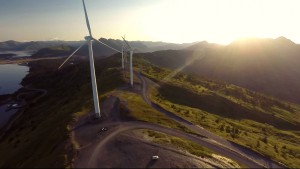
Jonathan Baird experienced the beauty of flight for the first time in a residential neighborhood without an airplane or a helicopter—just a drone. Unable to fly it to the left or right, he flew it straight up. As he watched the drone disappear into the sky above him and saw a stunning aerial view of the mountains and the horizon, he realized drones were here to stay.
The BYU graduate and successful entrepreneur soon decided to start selling drones online and created Dronesetc.com.
“It is useful in almost every industry,” Baird said. Some of his recent customers include real estate agents, construction companies, SWAT teams, summer camps, universities, Saudi princes and the Estonian Army.
Although drones have only recently transitioned from hobbyists’ toys to industry tools, they have spurred great changes in a variety of professions. Foremost among those professions are photography and videography.
“It’s smooth, high-quality video from any angle you want it to be from,” said Eric Schwantes, a BYU student and professional photographer.

To get areal footage previously, photographers would have to pay for a helicopter, which can cost several hundred dollars an hour.
“You have to take big loops to get the exact angle you need, and there are restrictions on how low you can go,” Schwantes said.
Schwantes recently used a drone to film a nature video in Anchorage, Alaska, and he has purchased one for personal use.
“Drones open up another dimension that you wouldn’t normally be able to get,” he said.
The Universe’s director, Steve Fidel, recently purchased a drone for educational and journalistic purposes.
“It is kind of like when camera phones started picking up,” Fidel said. “The world, visually, got a lot more interesting because everyone became a photographer.”
Fidel said he is currently working with the university’s risk management office to approve the ways in which he might use the drone. He explained that it could be used to gather news on campus or train journalism students on different applications it may have in the industry.
Despite the implementation of drones in a variety of professions, the Federal Aviation Administration (FAA) has yet to define clear laws regarding its usage. The current law, though unenforced, states drones may not be used for commercial purposes.

Drones pose a variety of legal questions. There is no designated airspace for drones, so one may have to be created. Drones could also easily be used to invade the privacy of others. Many state and national parks have already banned the use of drones, according to Baird.
“It has gotten totally ahead of the FAA,” Baird said.
Fidel said 30 years ago one of his own journalism professors had a remote control airplane he attached a camera too, but it wasn’t a big deal. Today, he said, the ease of flying and the lower price have created a buzz of interest around drones.
“That’s what makes it different today than 30 years ago,” he said.
New drones use GPS to pinpoint their exact location and, when left stationary, will fight the wind and other forces to stay in the exact same position. This and other technological advances have made flying a drone simple and intuitive.
“It’s like flying without the risk of flying,” Baird said. “It is the way to explore the world.”




